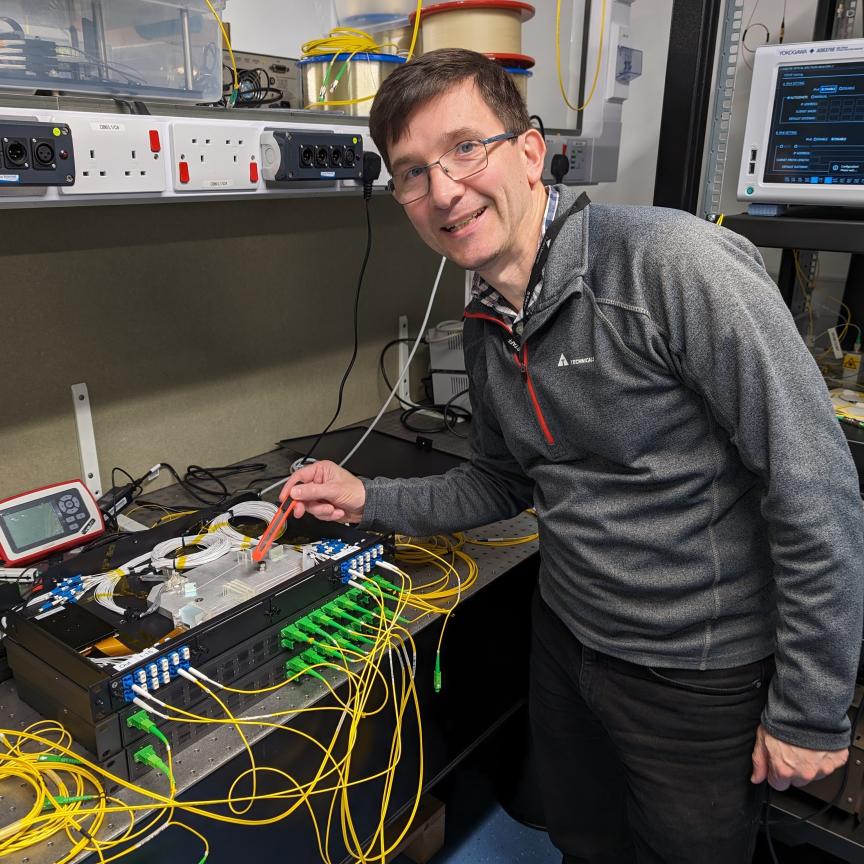A team of researchers at the University of Witwatersrand (Wits) in Johannesburg have outlined a new optical communication protocol that exploits spatial patterns of light for multi-dimensional encoding in a way that does not require the patterns to be recognised. The team believes that this could overcome the prior limitation of modal distortion in noisy channels.
Patterns of light have held promise for a large encoding alphabet in optical communications, but the challenge has been their susceptibility to distortion, such as in atmospheric turbulence or in bent optical fibre. The researchers’ solution is a new encoding of more than 50 vectorial patterns of light sent virtually noise-free across a turbulent atmosphere, opening a new approach to high-bit-rate optical communication.
The Wits team from the Structured Light Laboratory in the Wits School of Physics used a new invariant property of vectorial light to encode information. This quantity, which the researchers term “vectorness”, scales from 0 to 1 and remains unchanged when passing through a noisy channel. Unlike traditional amplitude modulation which is 0 or 1 (only a two-letter alphabet), the team used the invariance to partition the 0 to 1 vectorness range into more than 50 parts (0, 0.02, 0.04 and so on up to 1) for a 50-letter alphabet. Because the channel over which the information is sent does not distort the vectorness, both sender and receiver can always agree on the value, allowing for noise-free information transfer.
The hurdle that the team overcame was to use patterns of light in a manner that does not require them to be “recognised”, so that the natural distortion of noisy channels can be ignored. Instead, the invariant quantity just “adds up” light in specialised measurements, revealing a quantity that doesn’t see the distortion at all.
Professor Andrew Forbes, from the Wits School of Physics comments: “This is a very exciting advance because we can finally exploit the many patterns of light as an encoding alphabet without worrying about how noisy the channel is. In fact, the only limit to how big the alphabet can be is how good the detectors are and not at all influenced by the noise of the channel.”
Lead author and PhD candidate Keshaan Singh adds: “To create and detect the vectorness modulation requires nothing more than conventional communications technology, allowing our modal (pattern) based protocol to be deployed immediately in real-world settings.”
The results were published in Laser & Photonics Reviews and the team has already started demonstrations in optical fibre and in fast links across free-space. They believe that the approach could work in other noisy channels, including under water.
Reference
Singh, K., Nape, I., Buono, W. T., Dudley, A., Forbes, A., A Robust Basis for Multi-Bit Optical Communication with Vectorial Light. Laser Photonics Rev 2023, 17, 2200844. https://doi.org/10.1002/lpor.202200844


